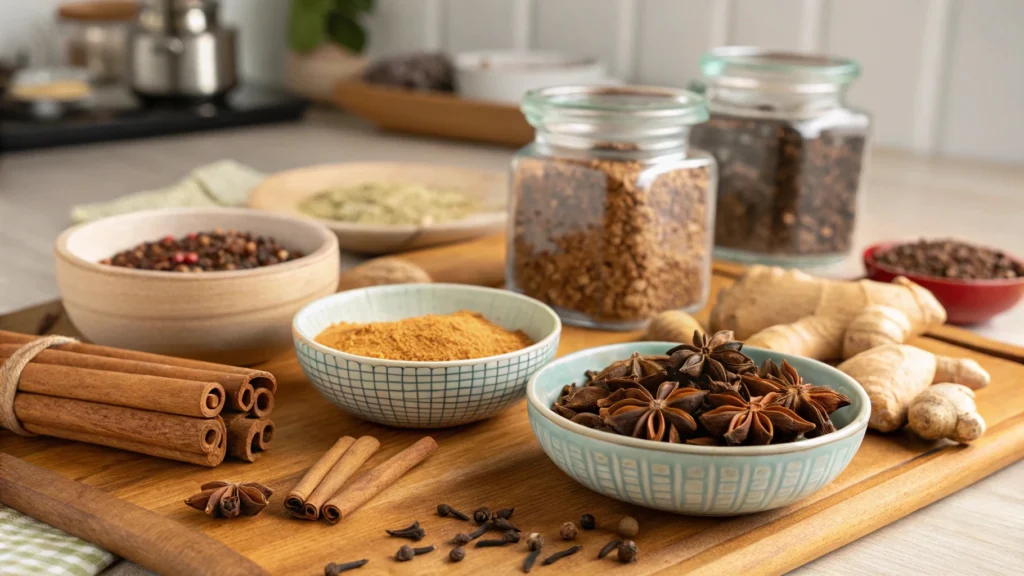What Takes the Bitterness Out of Turnip Greens? Turnip greens are a powerhouse of nutrients, rich in vitamins, minerals, and fiber, making them a fantastic addition to any diet. However, they are often known for their slightly bitter taste, which can be off-putting to some. The bitterness, while not unpleasant to everyone, can detract from the overall flavor profile of dishes if not properly addressed. Fortunately, there are several ways to mitigate the bitterness of turnip greens and make them more palatable.
In this article, we’ll delve into why turnip greens are bitter, how to remove that bitterness, and explore tips and techniques that will allow you to enjoy these healthy greens without the overpowering sharpness. If you’re ready to make turnip greens more enjoyable, read on for everything you need to know.
Why Are Turnip Greens Bitter?
Natural Compounds That Cause Bitterness
The primary reason turnip greens are bitter is the presence of compounds called glucosinolates. These sulfur-containing compounds are found in many cruciferous vegetables, such as broccoli, cabbage, and kale, and are known for their slightly bitter flavor. While glucosinolates have health benefits, such as antioxidant and anti-inflammatory properties, they are also responsible for the pungent taste that can turn some people off.
When turnip greens are cooked, glucosinolates break down and release a bitter substance, particularly if the greens are overcooked. However, not all glucosinolates are released during the cooking process, so cooking methods that preserve or enhance these compounds may intensify the bitterness.
Factors That Increase Bitterness in Turnip Greens
- Age of the Greens: The age of the turnip greens significantly affects their bitterness. Younger, tender greens are typically less bitter than older, mature leaves. As the plant matures, the concentration of glucosinolates increases, making the leaves more bitter. If you want a milder taste, opt for young, fresh greens.
- Cooking Methods: The method you choose for cooking turnip greens can also influence the intensity of their bitterness. Quick cooking methods, such as sautéing or steaming, may preserve some of the bitter compounds, while longer cooking methods, such as slow simmering, can help break them down and reduce the bitterness.
Best Ways to Remove Bitterness from Turnip Greens

Now that we understand what causes the bitterness in turnip greens, let’s explore several techniques that can help neutralize the sharp flavor and bring out the natural sweetness of the greens.
Blanching Before Cooking
Blanching is one of the most effective ways to reduce bitterness in turnip greens. This process involves briefly boiling the greens and then rapidly cooling them in cold water. Blanching helps to remove some of the bitter compounds while also preserving the vibrant green color of the leaves.
How to Blanch Turnip Greens:
- Bring a large pot of salted water to a boil.
- Add the turnip greens to the water and cook for 1-2 minutes.
- Immediately remove the greens from the boiling water and transfer them into a bowl of ice water to stop the cooking process.
- Drain the greens and use them in your recipe as desired.
This method can significantly reduce the bitterness, especially when combined with other flavor-balancing techniques.
Cooking with Acidic Ingredients
Acidic ingredients, such as vinegar, lemon juice, or tomatoes, are fantastic for neutralizing bitterness in turnip greens. The acidity helps to counterbalance the bitterness by altering the chemical structure of the bitter compounds, making them less perceptible to the taste buds.
How to Use Acids:
- Vinegar: Add a splash of vinegar (white or apple cider) toward the end of cooking. The vinegar will not only reduce bitterness but also add a touch of tangy brightness to the dish.
- Lemon Juice: A squeeze of lemon juice added just before serving can elevate the dish and cut through the bitterness.
- Tomatoes: Tomatoes contain natural acids that can be used in soups or stews to balance out the greens’ flavor. Add them early on to allow the flavors to meld together.
Pairing with Sweet or Savory Ingredients
Adding sweet or savory ingredients to turnip greens can help balance their bitterness and create a more harmonious flavor profile. Sweet ingredients, such as honey or sugar, can soften the sharpness, while savory ingredients like bacon or caramelized onions can add depth and richness.
Sweet Pairings:
- A touch of honey or maple syrup can balance out the bitterness while adding a hint of sweetness.
- Caramelized onions offer a sweet and savory combination that pairs well with turnip greens.
Savory Pairings:
- Smoked bacon or ham hocks can add a deep, savory flavor that complements the greens while helping to counteract bitterness.
- Beans, such as black-eyed peas or white beans, are also great to pair with turnip greens in soups or stews.
Using Fat for a Milder Taste
Incorporating fat into your cooking is another great way to soften the bitterness of turnip greens. Cooking with butter, olive oil, or bacon fat can mellow the sharp taste, creating a smoother, more balanced flavor.
Why Fat Helps:
Fats help distribute the flavor of seasonings and spices more evenly, ensuring that the bitterness doesn’t overpower the dish. Additionally, fats have a natural ability to coat the greens, making them feel less harsh on the palate.
Slow Cooking for Better Flavor
Slow cooking is an excellent method for turning bitter greens into a tender and flavorful dish. The longer cooking time helps to break down the glucosinolates and reduce bitterness. In dishes like collard greens or turnip greens, slow cooking with smoked meats or broth can turn a once-bitter green into a delicious, comforting dish.
Slow-Cooked Recipes:
- Turnip greens with smoked ham hocks and onions.
- A slow-cooked dish with turnip greens, white beans, and garlic.
Seasonings and Spices That Reduce Bitterness
Seasonings and spices are essential in transforming the flavor of turnip greens, especially when you’re trying to cut down on their natural bitterness. Adding the right blend of spices can elevate the greens, making them more flavorful and palatable. Here are some key seasonings that help enhance the overall taste while reducing bitterness.
Garlic
Garlic is a powerful flavor enhancer that pairs exceptionally well with turnip greens. Whether you’re using fresh garlic or garlic powder, it helps balance the bitterness by adding savory depth. Garlic has a robust flavor that complements the earthy taste of turnip greens, and its natural sweetness can help mellow the sharp, bitter notes. If you sauté garlic in oil or bacon fat before adding the greens, it brings out the best in both the garlic and the greens, creating a rich base for the dish.
Smoked Paprika
Smoked paprika is another excellent spice for reducing bitterness. It adds a warm, smoky flavor that complements the earthy greens. The richness of the smoked paprika helps mask the bitterness, while the smokiness introduces an added layer of depth. This spice is especially effective if you are cooking turnip greens in a dish that requires long cooking times, like a stew or slow-cooked greens. The flavor profile of smoked paprika works beautifully with greens that have been slow-simmered, adding complexity without overshadowing the natural flavors.
Onion Powder
Onion powder is a versatile spice that brings an underlying savory note to turnip greens. The mild, slightly sweet flavor of onion powder pairs well with the earthiness of the greens, balancing out their bitterness. Onion powder is a great addition if you’re trying to reduce the sharpness of turnip greens without overpowering them. Additionally, onion powder works well in combination with garlic and smoked paprika, creating a well-rounded seasoning mix.
Salt
While salt is often used to enhance flavors in general, it can also help reduce bitterness. Salt works by balancing out the strong flavors and making the bitter compounds in turnip greens less pronounced. It also helps bring out the natural sweetness in the greens. You don’t need to overdo it—just a pinch of salt can make a big difference in reducing the sharpness and allowing other flavors to shine.

Southern-Style Cooking Techniques
Southern cooking has long been praised for transforming bitter greens, such as turnip greens and collard greens, into flavorful, comforting dishes. The key to Southern-style cooking is the use of smoked meats, broth, and hot sauce—all of which not only enhance the flavor of the greens but also work to reduce their bitterness.
Smoked Meats
In Southern cuisine, smoked meats such as ham hocks, bacon, or smoked turkey are often added to turnip greens for flavor. The smoky, savory elements of these meats add a deep richness that complements the greens, while the fat from the meats also helps to soften the bitterness. The long cooking time that often accompanies smoked meats allows the flavors to meld together, making the turnip greens more tender and less bitter. Additionally, the meat’s fat content helps mellow out the strong, sharp flavors of the greens.
Broth
Adding a flavorful broth, such as chicken broth or vegetable broth, can help further balance the bitterness in turnip greens. The broth adds a savory base that enhances the natural flavors of the greens, while its moisture helps to tenderize them, making them less tough and bitter. If you’re slow-cooking turnip greens, a well-seasoned broth is essential for infusing the greens with flavor and making the dish more enjoyable. The broth helps dilute the bitterness, making the greens more accessible to those who are sensitive to their strong taste.
Hot Sauce
For those who enjoy a bit of heat, hot sauce is a common ingredient in Southern cooking. Adding a few dashes of your favorite hot sauce can not only add spice and complexity to the dish, but the acidity in the hot sauce can also help cut through the bitterness of the greens. The heat from the sauce works synergistically with the richness of the smoked meats and the savory broth, creating a well-rounded, flavorful dish that isn’t dominated by bitterness.
Common Mistakes That Make Turnip Greens Too Bitter
Overcooking or Underseasoning
Overcooking turnip greens can intensify their bitterness, turning them mushy and unappetizing. Similarly, underseasoning can leave the bitterness unbalanced. Be mindful of cooking time and seasoning, and try to incorporate some of the flavor-balancing techniques mentioned earlier.
Using Old or Tough Greens
Older, tougher turnip greens are much more bitter than younger, more tender ones. When shopping for turnip greens, choose fresh, young leaves for a milder taste.
Frequently Asked Questions (FAQs)
Does salt help reduce the bitterness of turnip greens?
Yes, salt can help reduce the bitterness in turnip greens. It works by balancing the flavors, enhancing the greens’ natural savory qualities, and softening the sharp, bitter notes. A small pinch of salt can go a long way in making the turnip greens taste more balanced without overpowering them. It’s a simple yet effective way to make the greens more enjoyable, especially when combined with other flavor-enhancing techniques.
Should I soak turnip greens before cooking?
While it’s not absolutely necessary to soak turnip greens before cooking, it’s essential to wash them thoroughly. Turnip greens, like many leafy vegetables, can harbor dirt and grit in the leaves and stems. Washing them well under cold water ensures they’re clean and free from any unwanted particles. Soaking them for a few minutes is optional if you feel they are particularly gritty, but it’s the thorough rinsing that’s most important.
Can I use baking soda to remove bitterness?
Baking soda is not the best option for reducing bitterness in turnip greens. While it can neutralize some acidity in food, it can also negatively affect the texture and taste of the greens. The baking soda can make them mushy, and it might alter their flavor, giving them an unpleasant metallic or soapy taste. Instead, focus on cooking methods like blanching, using acidic ingredients like vinegar or lemon, or adding flavor-enhancing spices like garlic or smoked paprika.
What is the best meat to cook with turnip greens?
Smoked meats are the traditional choice for cooking with turnip greens. Ham hocks, bacon, or smoked turkey are particularly popular because they add a rich, savory depth to the dish. The smoky flavor of the meat pairs well with the earthy bitterness of the greens, while the fat from the meat helps soften the bitterness. Slow-cooking these meats with the greens also allows the flavors to meld together, creating a comforting and flavorful dish. For a lighter option, you could also use chicken or turkey breast, though smoked meats are often preferred for the best results.
Conclusion about What Takes the Bitterness Out of Turnip Greens?
Turnip greens are a nutritious and flavorful vegetable that can be enjoyed in a variety of dishes. While their bitterness may seem off-putting at first, using the right cooking methods and ingredients can transform them into a delicious and enjoyable addition to any meal. Whether you choose to blanch, pair them with sweet or savory ingredients, or slow-cook them with smoked meats, there are plenty of ways to reduce the bitterness and enhance the flavor. Don’t be afraid to experiment and find the method that works best for you!

